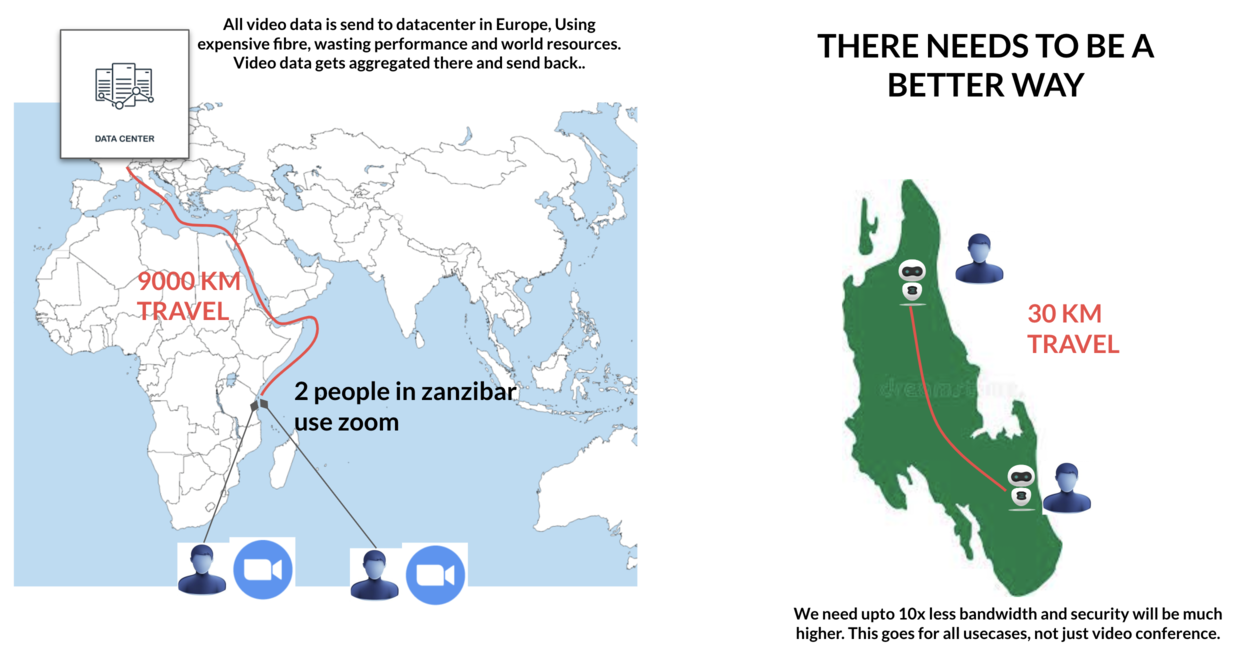1.7 KiB
Rethinking the Internet
Understanding the Three Layers of the Internet
The Internet is made of 3 layers:
-
Compute & Storage: This layer houses applications and is predominantly centralized, operating from vast data centers.
-
Network: The network layer facilitates the movement of information, whether it's wireless, via cables like fiber, or through satellite links. Today, information often travels long distances, with a few companies controlling over 80% of the internet’s network capacity.
-
Applications: These are hosted in large data centers, relying on the centralized compute and storage layers. This centralization makes the system vulnerable.
Current Challenges
Digital information primarily flows through extensive fiber backbone networks, as shown here:
The internet’s design causes inefficiencies, such as when two people in Zanzibar use a service like Zoom. Their data travels all the way to European data centers where Zoom's servers are hosted and back, leading to slow performance, decreased reliability, and increased costs.
Issues with Autonomy and Sovereignty
Our current internet model compromises autonomy and sovereignty. Most data is stored in large data centers controlled by a few major corporations, effectively turning users into products.
Moreover, the internet is replicated many times across various applications, each requiring its own full infrastructure. This approach is unsustainable and inefficient.
This retains the original structure and links, ensuring that the information is clear and the visual aids are effectively utilized.



